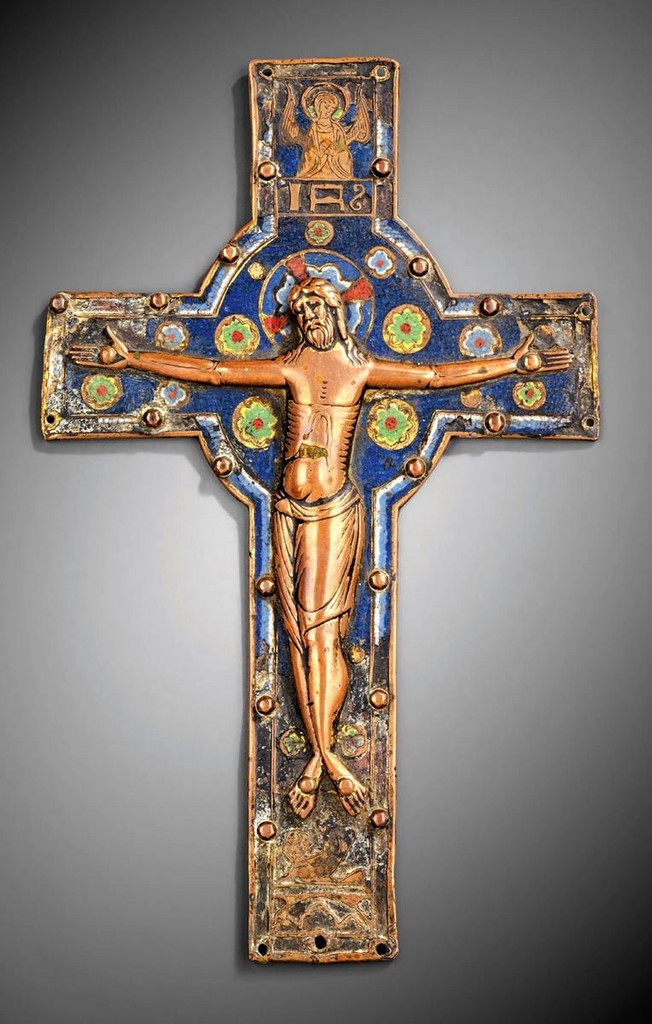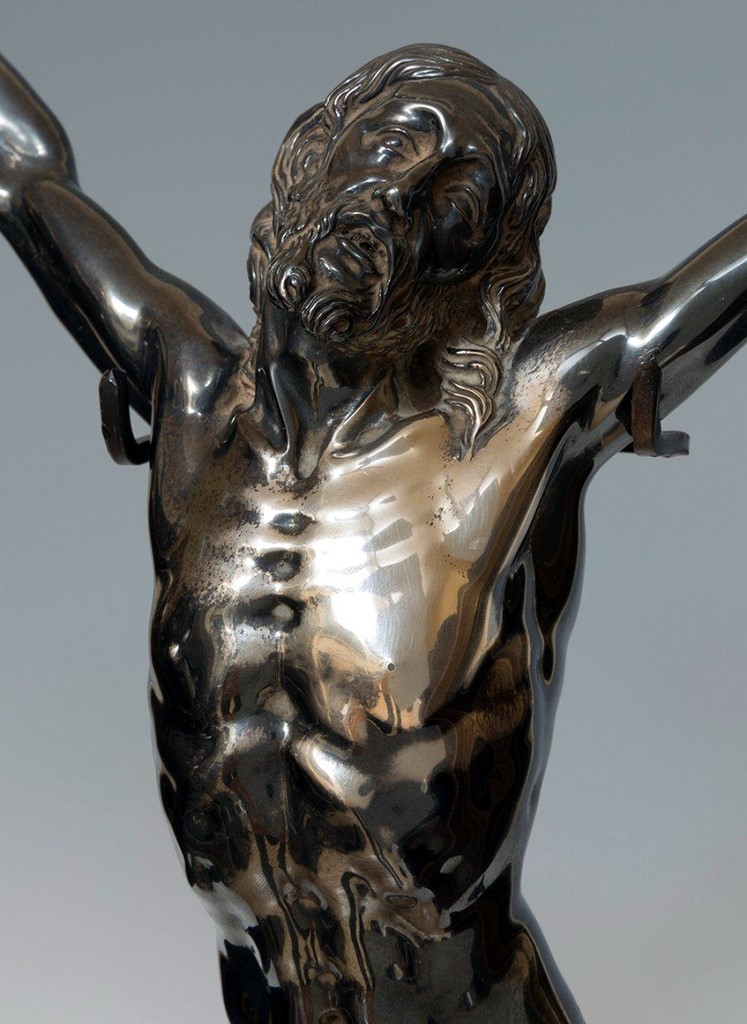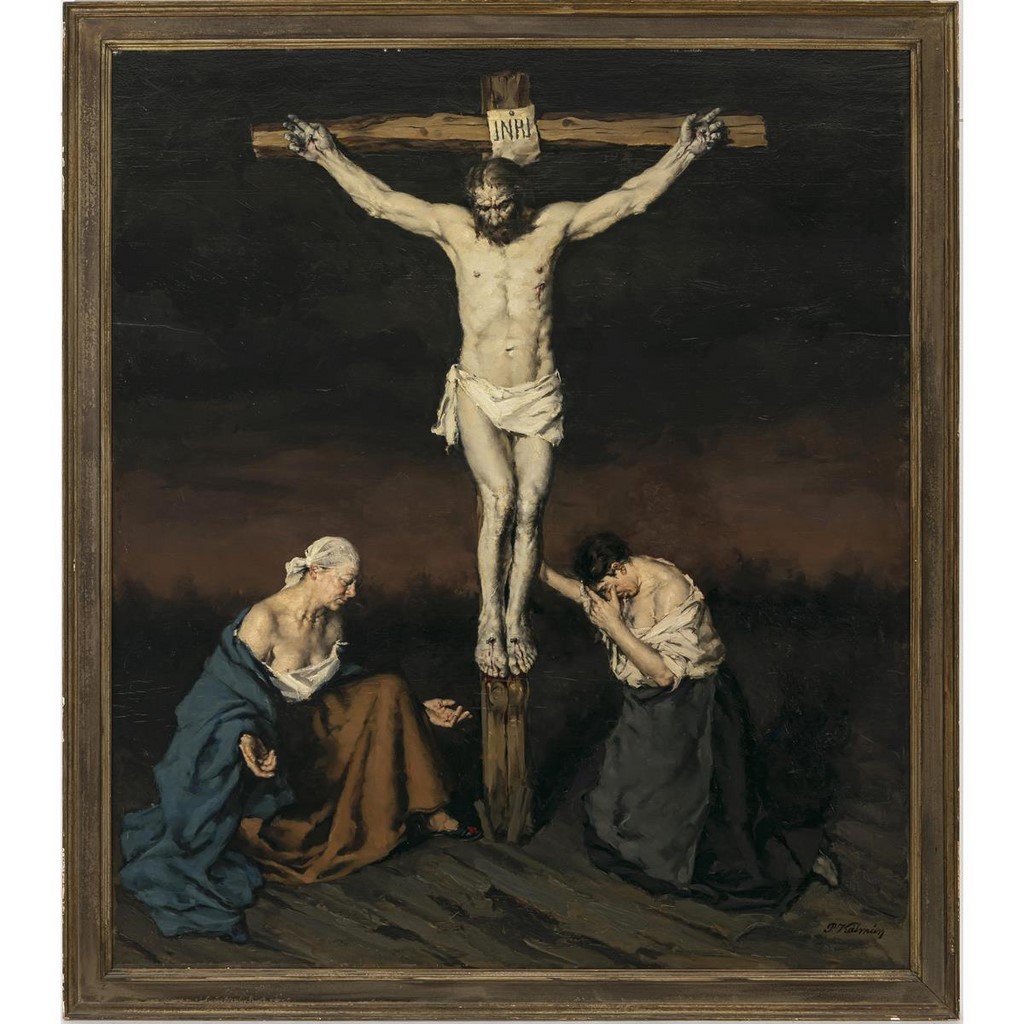Les ventes du Printemps 2024
Peu de nouveautés sont apparues au cours des ventes de ce second trimestre de l'année 2024. Pour la première fois j'ai ressenti un certain ennui à dépouiller les listes de vente établies par les Etudes. Peut-être l'âge ? Cependant les lots présentés ont manqué singulièrement d'originalité et de nombreuses estimations trop élevées conduisent aux retraits des lots. Ce compte-rendu en est d'autant plus bref.
Elle avait été ravalée au 1er Trimestre 2024
Je l'avais signalée parmi les opportunités à saisir au cas où elle se représenterait en Vente.
Ainsi soit-il !
La Maison de ventes Le Floc'h à Saint-Cloud l'a remise en vente le 4 avril 2024 en réduisant son estimation basse de 500€ à 200€.
Finalement cette Montre a été adjugée 600€ au marteau soit l'estimation haute de sa 1ère présentation en vente.
Lot N°230
Montre dans un écrin violoné en laiton doré et argenté, partiellement ajouré, figurant la Passion du Christ reposant sur une croix de nacre, avec support de velours perlé au revers. Mouvement de montre signé QUARE London pour Daniel QUARE (1649-1724). Mouvement sans répétition, échappement à roue de rencontre, aiguille des heures sertie de pierres blanches. XIXe siècle. Haut. : 23,5 cm - Larg. : 12,5 cm
Estimation
200 € - 300 €
Ce Christ dit expirant apparaît de belle facture et rare dans cette dimension.
Il est en argent. Il porte un poinçon malheureusement illisible ce qui interroge sur sa réelle ancienneté.
La Maison de Ventes Setdart basée à Barcelone qui l'a présenté le 10 avril 2024 l'attribue aux années 1700. Il a été adjugé 22 000€ au marteau en-dessous de son estimation basse néanmoins à un prix élevé au regard de l'incertitude sur son siècle de production.
Lot N° 68
Italian school; end of the XVII century- beginning of the XVIII century. "Expiring Christ".
Silver. Presents illegible punch.
Measurements: 51 x 30,5 x 7 cm.
The polished finish of the material, the symmetry and the modeling of the forms show a balanced and idealized anatomy that forms an image that, in spite of the dramatism contained in the theme of the crucifixion, transmits an immutable beauty. However, despite this ideal, the work presents the emotion of the moment of Christ's death in an exacerbated and exalted way. In the face of Jesus we see his open eyes and mouth in a gesture that seems to capture the last breath of the protagonist. The twisting of his belly shows us a classic anatomy in its forms, but stark and in tension; nailed with three nails; the head slightly tilted to his right side; the large purity cloth, with abundant broken folds, is knotted on his right hip dropping one of its ends. The canon is slightly elongated with the intention of reflecting the Calvary of the cross, for this reason the arms can be appreciated in their maximum tension and the torso clearly marks the ribs. It should be noted that in this case it is not anchored to the cross that must have existed in origin.
Crucifixions and crucifixes have appeared in the history of art and popular culture since before the era of the pagan Roman Empire. The crucifixion of Jesus has been depicted in religious art since the 4th century. It is one of the most recurrent themes in Christian art and the one with the most obvious iconography. Although Christ is sometimes depicted clothed, it is usual to represent his naked body, albeit with the genitals covered with a purity cloth (perizonium); full nudes are very rare, but prominent (Brunelleschi, Michelangelo, Cellini). The conventions of representation of the different attitudes of the crucified Christ are designated by the Latin expressions Christus triumphans ("triumphant" -not to be confused with the Maiestas Domini or the Pantocrator-), Christus patiens ("resigned" -not to be confused with the Christ of patience-) and Christus dolens ("suffering" -not to be confused with the Vir dolorum-). The triumphans is represented alive, with open eyes and erect body; the patiens is represented dead, with the will totally emptied (kenosis), the head bowed, the face with serene expression, the eyes closed and the body arched, showing the five wounds; the dolens is represented in a similar way to the patiens, but with a gesture of pain, particularly in the mouth.
Estimation 27 000€-28 000€
Si tous les descriptifs étaient aussi détaillés que celui qui a accompagné la vente de cette charmante gravure sur bois datant du 12 juillet 1493 la confiance entre les Vendeurs et les Acheteurs serait totale.
La Vente s'est déroulée le 18 avril 2024 dans les locaux de Old Master Print basée dans la ville flamande d'Izegem.
Cette gravure de la Crucifixion a été adjugée 750€ au marteau, un prix modeste si on prend en compte la capacité de cette gravure à nous transporter dans l'univers de la jeunesse d'Albrecht Dürer (1471-1528).
Lot N°39
Michel Wolgemut (1434-1519) - The Crucifixion - 1493
Old colored woodcut from the first edition of Hartmann Schedel, "Liber Cronicarum", printed by Anton Koberger in Nuremberg on 12 July 1493. The crucifixion of Jesus in the 34th year of his life with Mary and John at the foot of the cross. Woodcut from the nativity and life of Christ, folio XCV verso. The wood blocks were designed by Michael Wolgemut and his stepson Wilhelm Pleydenwurff and their assistants, including the young Albrecht Dürer, who was apprenticed to Wolgemut at the time. The printing was carried out under the supervision of the great scholar-printer Anton Koberger, godfather of Dürer. Wohlgemut was Albrecht Dürer's tutor between 1486-90. Since the young Dürer was working in the workshop in the years 1486-1489 when many of the early designs for the Chronicle were made he might be involved.
Dimensions9,00 x 7,20 cm
Artist or Maker
Michael (1434) Wolgemut
Medium Woodcut
Date1493
Condition Report
Excellent condition. With the original Latin letterpress above and on the backside of the woodcut from the first edition.
Literature
Liber Chronicarum, here a first edition , printed by Anton Koberger in Nuremberg on 12 July 1493 in old coloring. The luxury editions in old coloring are mentioned in literature and were of the most expensive.
estimation 200€- 300€


Estimation 1 500€ - 2 000€ -
Late 15th century
Title: Corpus Christi.
Technique: Carved in the round with moveable arms. Polychromed, the mount has been worked over.
Measurement: 92 x 46 (96) x 20cm.
Provenance:
Private ownership, Czech Republic.
Estimation 80 000€ - 90 000€ -


Christ en bronze finement ciselé doré. Epoque du XVIIIe siècle. Hauteur : 50 cm


Publié le 8 juillet 2024












